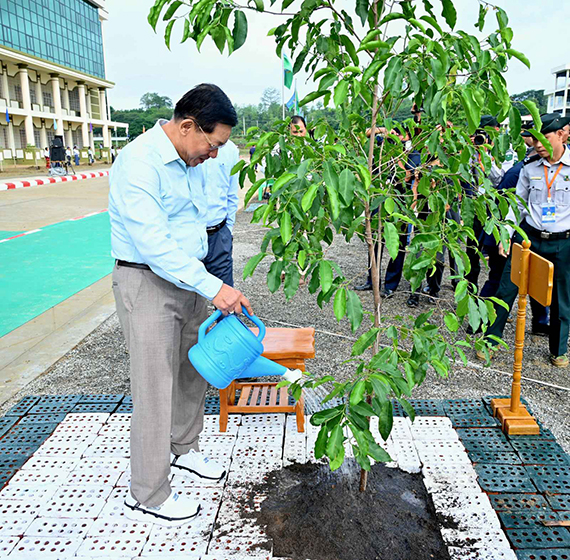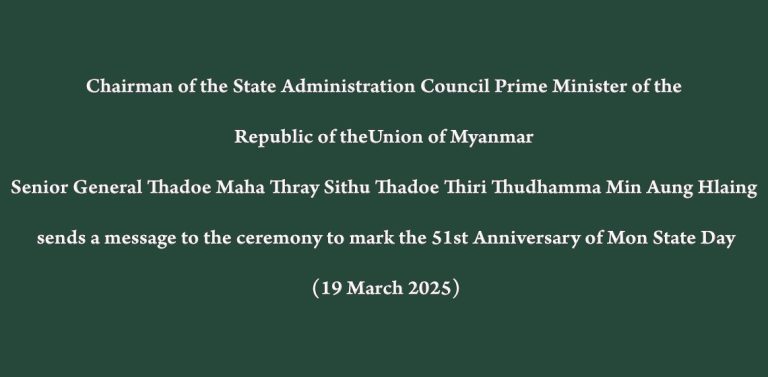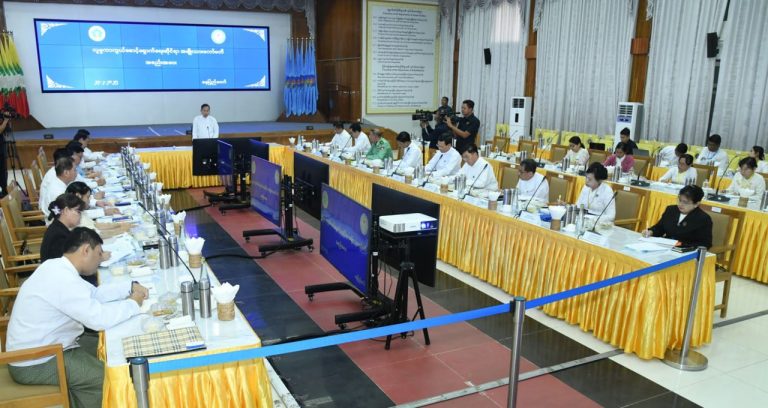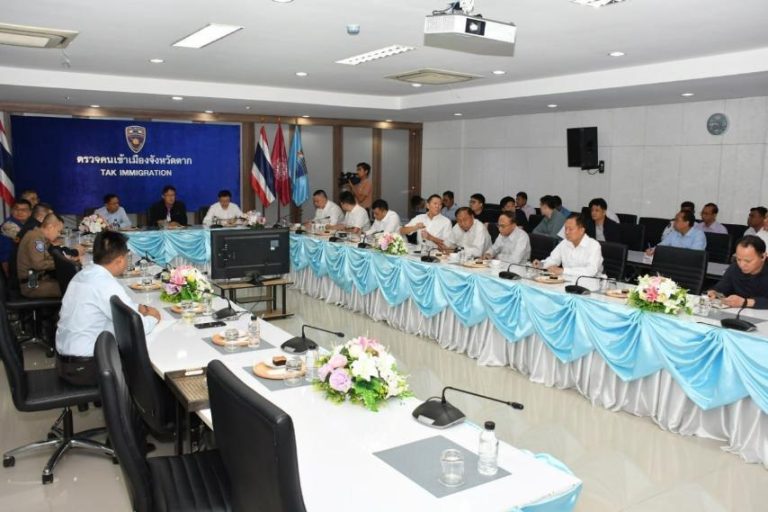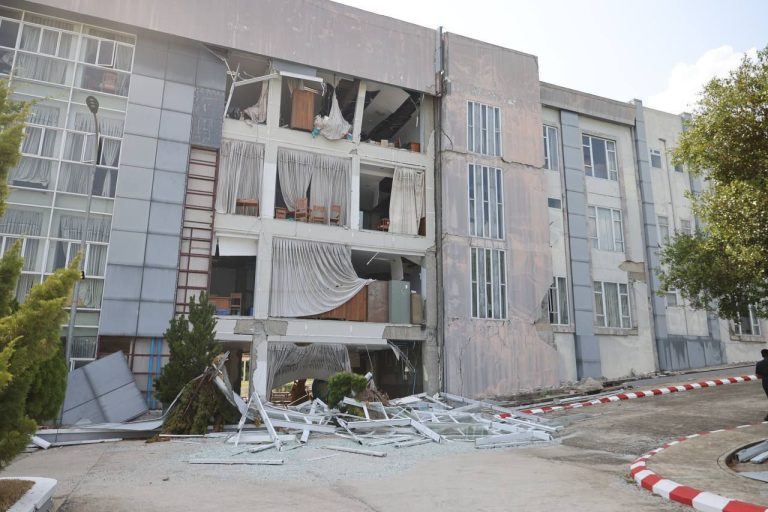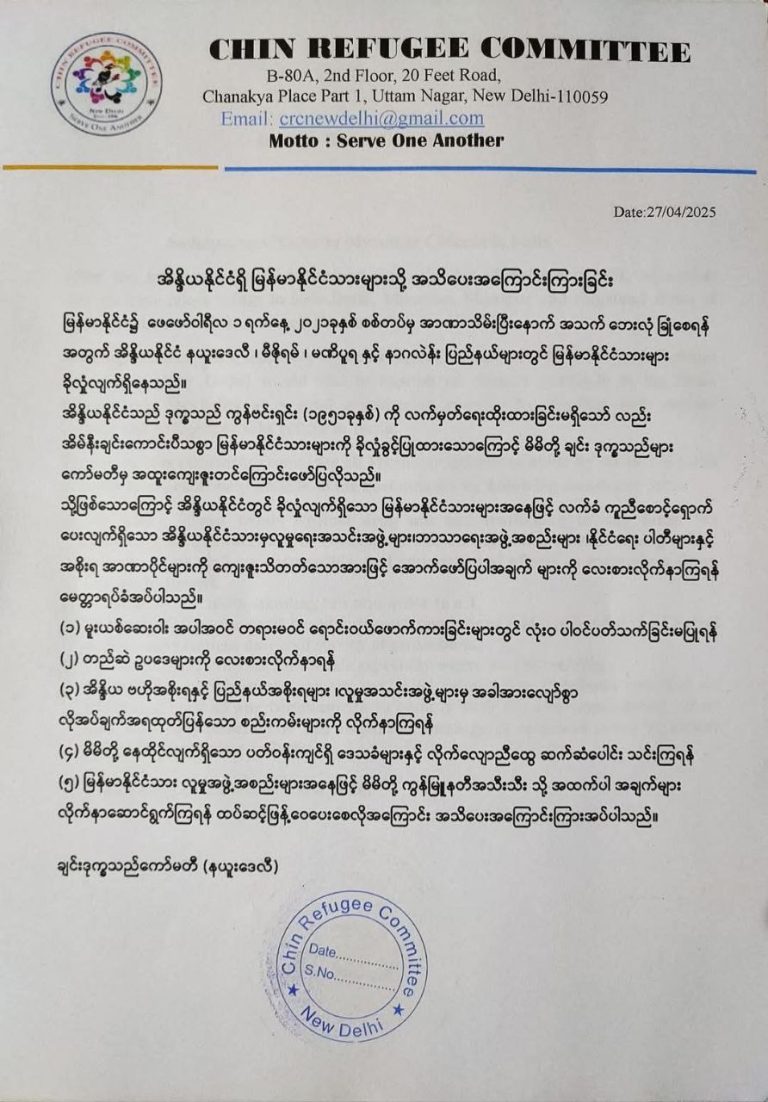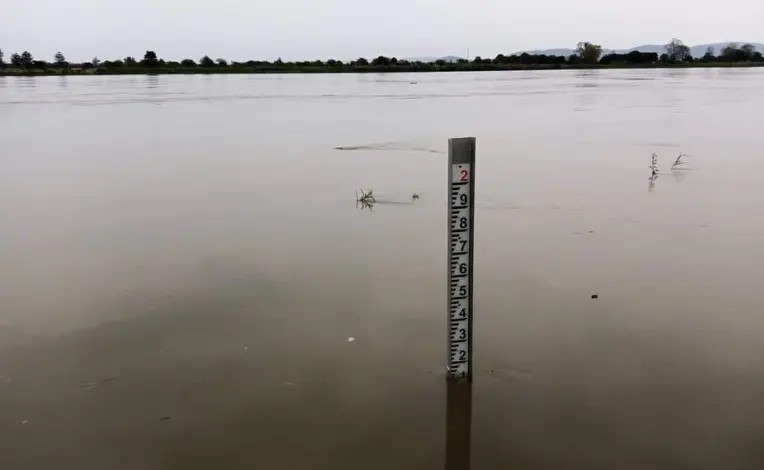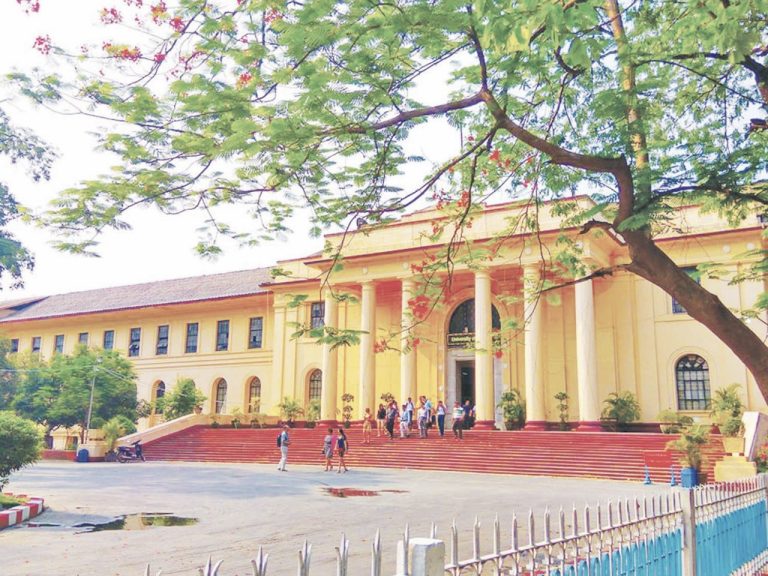
Nay Pyi Taw June 4
Nay Pyi Taw, Union Territory, held the first monsoon tree plantation ceremony for 2024 in the premises of Naypyitaw State Academy here this morning.
Chairman of State Administration Council Prime Minister Senior General Min Aung Hlaing attended the ceremony and planted a khayay sapling.
Present at the ceremony together with the Senior General were SAC Vice Chairman Deputy Prime Minister Vice-Senior General Soe Win, the SAC Secretary, the SAC Joint Secretary SAC members, union level officials, union ministers, the Nay Pyi Taw Council chair, senior military officers from the Office of the Commander-in-Chief, the Nay Pyi Taw Command commander, deputy ministers, officials of ministries, staff, the rector, the protector, lecturers, senior faculty members, students of the academy, and officials.
First, the Senior General delivered a speech. He said today, a tree-planting ceremony was held in the compound of Naypyitaw State Academy that encourages thinking power and creation, and promotes applied research and innovation through quality teaching with the aim of setting up an institution of higher learning. Environmental greening and beautification, creation of a peaceful ambiance for students and teachers, fairness of the weather and students’ awareness of and enthusiasm for tree planting and forest conservation are the goals of the ceremony.
From the time the SAC assumed State duties in 2021 till now, 12,455 saplings were planted at the eight annual tree planting activities in Nay Pyi Taw, and Tatmadaw (Army, Navy and Air) families held eight tree planting ceremonies and planted 30,154 saplings successfully. A total of 775,192 seedlings were grown at 1,147 pre- and monsoon tree planting ceremonies in the whole country. SAC has organized the ceremonies to arouse public awareness of the benefits of trees and public involvement in the ceremonies.
At this ceremony, 1,030 saplings of tree six species including gangway, khayay, seinban and pit auk will be systematically planted as they will be well-matched with the university compound.
During the current monsoon season, 22.332 million saplings will be planted in the entire country including state-owned tree plantations. In addition, tree-planting and conservation activities such as continuous establishment of shade tree and windbreakers plantations in the environs of rural and urban areas acres wise, forest and tree protection, establishment of mangrove forests will be carried out with greater momentum. The Senior General then spoke of the need to grow, nurture and protect trees on both sides of ASEAN highways, expressways and railways, and called for the involvement of people together with the relevant departments for the success of those activities.
The Senior General then said as for the thriving of every planted sapling, nurseries must care for the saplings for at least two years until they reach the height of two feet. And to achieve such healthy saplings, nurseries must take time to collect seeds from quality strains and make preparations to nurture the plants in advance. A two-year old thriving sapling no longer needs intense care.
As for the thriving of saplings, serious attention must be paid to choosing the correct species for the particular place, systematic ground preparation, soil moisture, correct pit size, correct spacing, and correct methods. The ground must also be added with nutrients.
All in all, systematic care and planting methods are essential.
According to the 2020 FAO report, one third of the world’s land surface is covered by nearly 10.03 billion acres of trees. But sadly, the global forest area is dwindling at an annual rate of 19.27 million acres during the period from 1990 to 2000; an annual rate of 12.85 million acres during the period between 2000 and 2010; and an annual rate of 11.61 million acres during the period between 2010 and 2020.
Forest cover of ASEAN region was over 528.79 million acres, but during the 30-year period from 1990 to 2020, about one sixth of the area or 92.91 million acres faced depletion.
Myanmar has the second largest forest area in ASEAN and according to the 2020 FAO report, 42.19 percent of the country is covered by forests.
Its forest area loss was 1.7 percent during the period from 2010 to 2015, but during the period from 2010 to 2020 the figure fell to 0.9 percent. Hence, the country could reduce its forest area loss.
Preparations are underway to issue an analytic report on forest resources for 2025. Preliminary studies show current mangrove forest area at 1.13 million acres or 0.67 percent of the country’s land area, up from 1.07 million acres or 0.64 percent of the country’s land area in 2020. It is the result of Myanmar’s reforestation project and forest conservation and protection activities.
During the three-year administration, SAC set up 41 buffer zones, with a total area of over fifty-six thousand acres (560797.57 acres) and 14 nature conservation areas, with a total area of over fifty-nine thousand acres (590,015.13 acres), totaling over 1.15 million acres (1,150,812.7 acres), and could accelerated forest conservation activities.
Climate change has put Myanmar in the list of countries vulnerable to climate change.
The effects of el nino that appeared in the 2024 summer in Myanmar were extreme weather conditions such as changes in rain patterns, rising day temperatures, brewing of storms, droughts. Heat wave that entered in April 2024 had increased day temperatures.
Temperatures in Chauk in central Myanmar reached 48.2 degrees Celsius on 28 April and were listed as the world’s hottest town. Likewise, Magway, Minbu, NyaungU and Sagaing were included in the 15 worlds’ hottest towns.
Therefore, for the greening activities in the 13 districts of the tropical region, the Forest Department and the Tropical Region Greening Department will plant a total of 3,551.20 acres in the coming rainy season. This includes 2 acres per village for multipurpose cultivation and village firewood cultivation, with over 2 million (2,092,847) trees to be planted in 809 villages.
Additionally, shade-providing windbreak trees will be planted along roadsides. In line with the motto “To mitigate global warming, conserving forests is a solution,” the importance of forests in reducing climate change is emphasized. The public is urged to understand the significance of establishing forest plantations, conserving remaining natural forests, and expanding the use of alternative fuels to firewood as a national duty.
The Nay Pyi Taw Council area, being the capital of the country, is actively working towards becoming a Green City, Clean City, and Smart City.
To make it a city of education, the Naypyitaw State Academy has been established as a top national university offering diverse advanced studies.
Efforts are needed to maintain its campus and surroundings with aesthetically pleasing and fragrant plants, ensuring a continuously green and lush environment. Collective action is required to maintain a clean and beautiful natural environment with abundant forests in the Nay Pyi Taw Council area.
Everyone is encouraged to protect the trees and plants being planted today to ensure their long-term growth and sustainability.
For the continuous development and prosperity of the nation, the fulfillment of food security, and the socio-economic development of the people, trees and forests play a crucial role. Therefore, to increase forest coverage across the country, create a green and beautiful environment, improve climate conditions, and prevent natural disasters, everyone should collaborate and carry out these efforts as a national duty. This was emphasized in the address.
Following this, Senior General Min Aung Hlaing led the planting of a khayay tree in a designated area.
At the ceremony, Vice-Senior General Soe Win, along with the Council Secretary, Joint Secretary, Council members, Union-level officials, invited guests, and Naypyitaw State Academy professors, associate professors, teachers, students, and departmental staff, also participated in the tree planting.
The Senior General then toured the 2024 rainy season tree planting ceremony, observing and encouraging the participants as they planted the trees.
During the ceremony, six species of trees, including gangaw, khayay, seinban, and pidauk, totaling 1,030 trees, were planted.
Subsequently, the Senior General inspected the proposed designs and plans for the construction of the Naypyitaw State Academy convocation hall and reviewed the opinions collected from students. He provided guidance on necessary matters based on the presentations from responsible officials.
